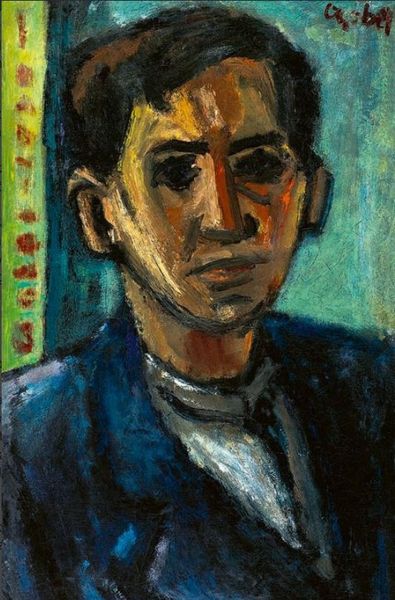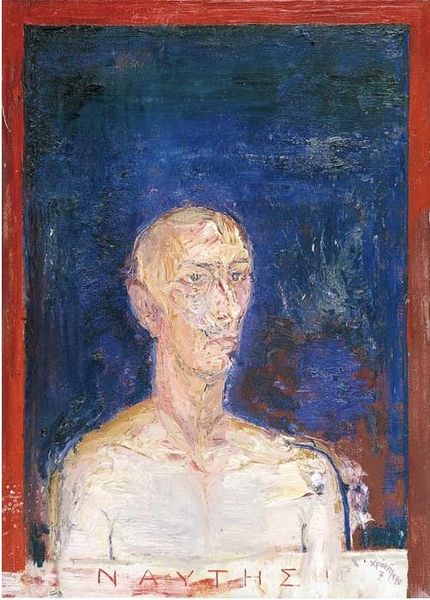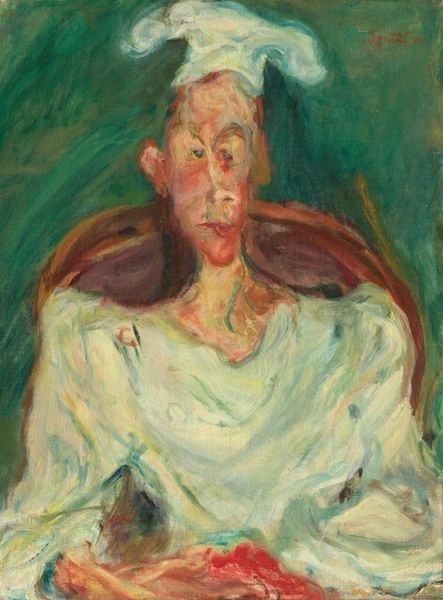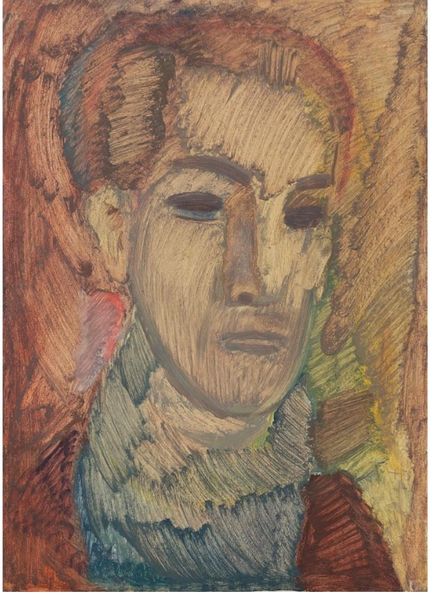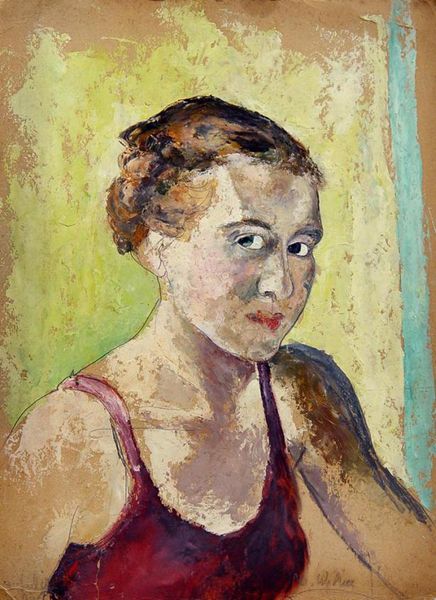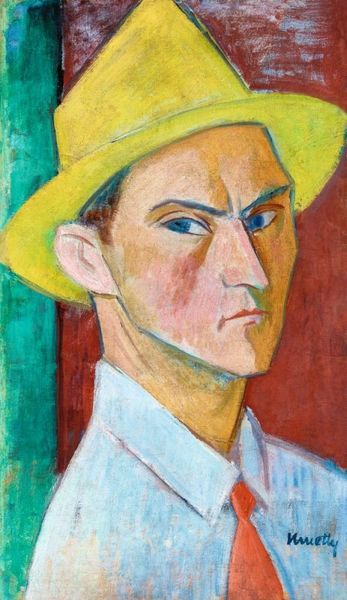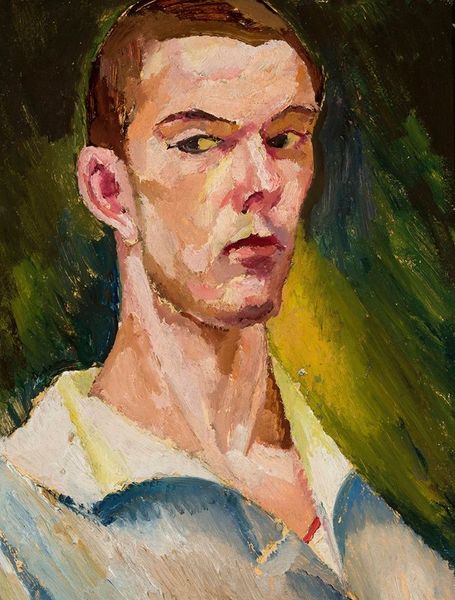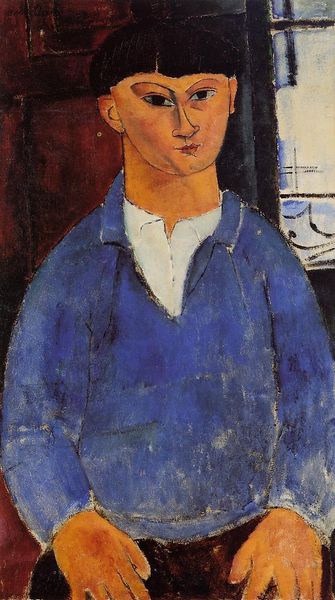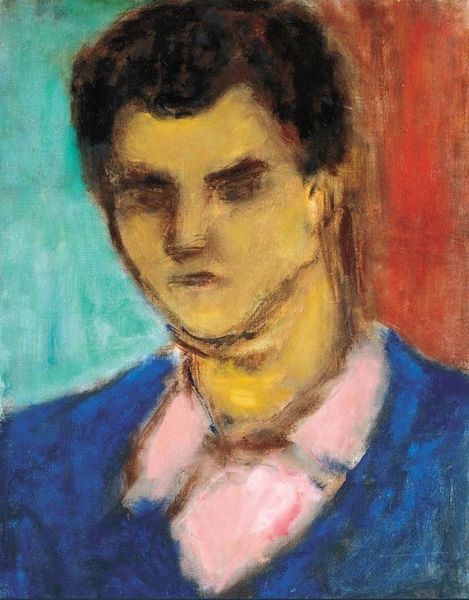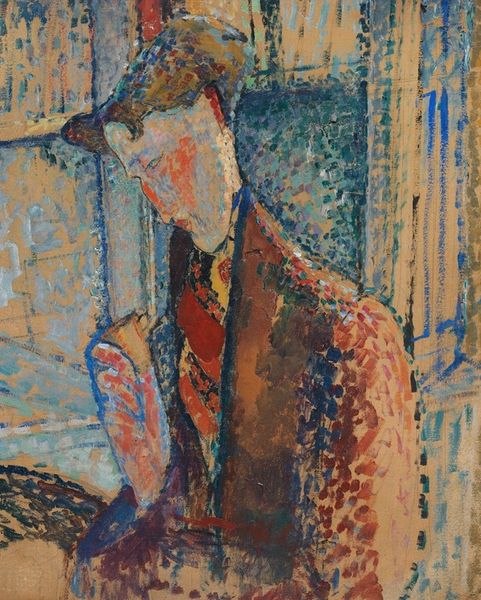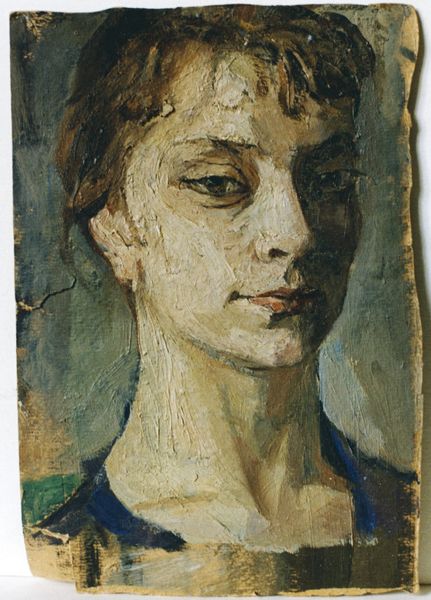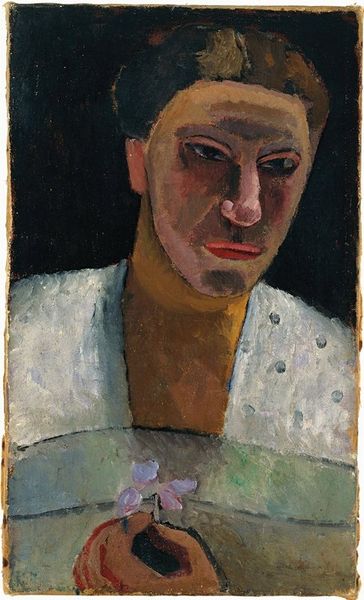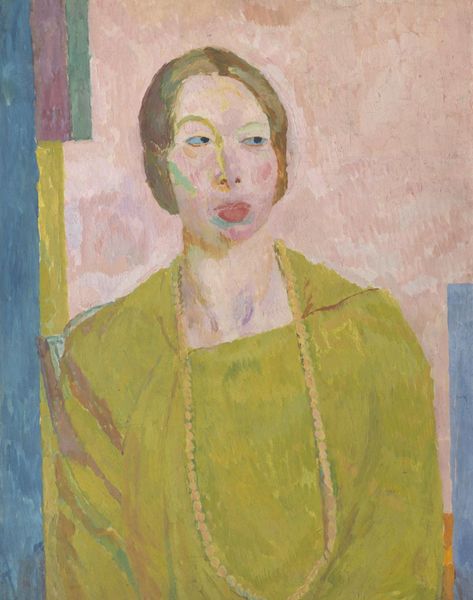
Copyright: Max Gubler,Fair Use
Editor: This is Max Gubler's "Self-Portrait" from 1952, an oil painting. It strikes me as quite raw and intense. What is your interpretation of this work, especially considering its expressive style? Curator: Observe the composition. The planes of the face are rendered through aggressive strokes, dissecting the image. Color becomes structure: see how the reds around the eyes and cheeks build both form and a feverish affect? The ground itself seems destabilized, built of layered marks that defy the eye’s impulse toward resolution. Do you notice how the clothing becomes pure brushwork? Editor: I do, the brushstrokes in the shirt are very prominent and seem almost detached from representing fabric. It makes me wonder about the artist’s emotional state during painting. Curator: Quite right. Emotional states may be apprehended only insofar as they are encoded within the materiality of paint and the structure of representation. Consider how the painting shatters a cohesive, legible image; what results is the affect of psychological fragmentation performed through material and pictorial construction. Is that fragmentation itself an emotional state? Editor: So you are suggesting it's less about what the artist felt and more about how those feelings manifest in the actual paint and form? Curator: Precisely. The formal elements--the application of pigment and disruption of cohesive space-- become paramount. It is about seeing those fractures of representation *as* emotional and psychological spaces, more than represent*ing* something directly from within. Editor: That shifts my perspective completely. I see the rawness as part of the medium, not just the mood. Thanks, I will see the work from now on as a play of color and shapes to find a new kind of form. Curator: A productive insight. We gain further understanding when the materials and their arrangement lead our interpretations.
Comments
No comments
Be the first to comment and join the conversation on the ultimate creative platform.
